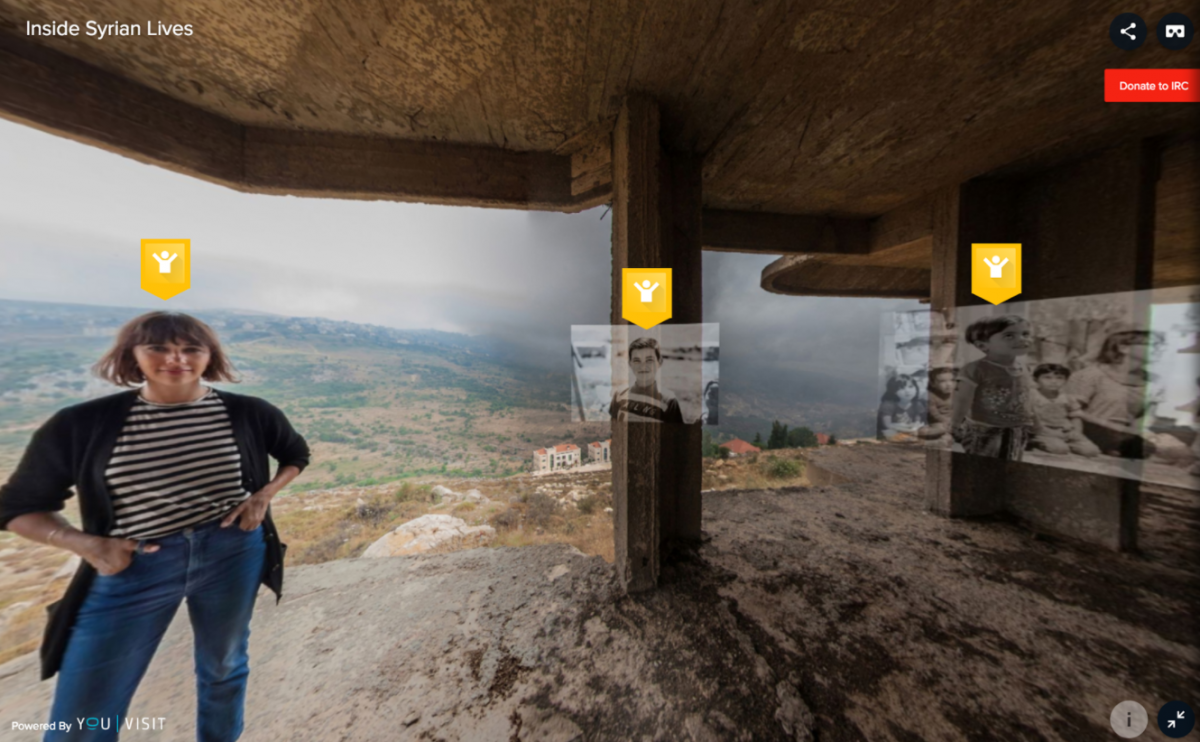How the International Rescue Committee used virtual reality to attract donors
With so much information coming at news readers today with a daily barrage of social media, email newsletters and push notifications, many feel overburdened. In fact, 20 percent of Americans feel “information overload,” according to the Pew Research Center. That’s down from a decade ago, but news fatigue is undoubtedly a byproduct of our hyper-saturated media diet. So how can news organizations cut through the noise and keep readers engaged?
Game designers have figured out that giving players choices and using non-linear storytelling is important to building a deeper engagement and better user experience. Virtual reality, which shares more with gaming than traditional media, also benefits from these tools. The challenge for newsrooms and non-profits trying to capture reader attention is how to unlock the potential of VR to break through the information glut.
Cathe Neukum, an executive producer at the International Rescue Committee, a humanitarian organization, is among those having success harnessing the power of VR. To her, the information overload experienced by news readers is not dissimilar from donor fatigue, a phenomenon in which people become less inclined to donate to charitable causes like hers over time.

“We can’t take donors – our followers, our constituents – into the field without a lot of expense and time. It’s just not practical,” Neukum explained at a recent panel at South by Southwest in Austin, Texas. “But with VR, we can take the experience to people and that’s really important for us.” Virtual reality’s sense of immediacy and immersion can draw readers like no other format, she said. It’s a technology from which other non-profits can benefit. Newsrooms, of course, should learn to better leverage VR, too.
For their most recent VR project, Neukum partnered with YouVisit, an award-winning production studio, to build “Four Walls,” a VR experience that takes viewers into the world of Syrian refugees in Lebanon. The project, according to Gordon Meyer, another panelist and head of marketing at YouVisit, allows viewers “to travel by technology and meet a family on the other side of the world affected by war.”
 Neukum, who is used to traditional filmmaking, was astounded by the detail and immersive quality of VR. In Lebanon, for example, many refugees’ houses have illegal wiring running along cracked, water-damaged ceilings. With the headset on, Neukum found herself unable to stop staring at the ceilings as she listened to people speak about their struggle. The claustrophobia of having 10 people living in a roughly 10-by-15 foot room really hits the viewer, she explained.
Neukum, who is used to traditional filmmaking, was astounded by the detail and immersive quality of VR. In Lebanon, for example, many refugees’ houses have illegal wiring running along cracked, water-damaged ceilings. With the headset on, Neukum found herself unable to stop staring at the ceilings as she listened to people speak about their struggle. The claustrophobia of having 10 people living in a roughly 10-by-15 foot room really hits the viewer, she explained.
“Four Walls” is a non-linear story that allows viewers to follow one of many narratives. While this is atypical of many VR or 360 video news pieces, it’s often what sets apart many of journalism’s most ambitious experimental storytelling projects, like National Geographic’s “Mars.” And it’s what set “Four Walls” apart, says Meyer. “Users aren’t passively watching just a 360 video. So if a certain storyline intrigues a user they can follow that path and connect with that person without having to engage with the entire experience.”
Meyer broke down the kind of impact the “Four Walls” has had so far. “All told, about 30 million impressions, conservatively speaking, with a zero dollar marketing budget,” he said. And that wasn’t only in the United States. “In terms of international impact, we’ve attracted viewers from over 113 countries,” he said.

The engagement time was perhaps the most intriguing.
“In terms of depth of engagement, we’ve kept them for just over eight minutes in the VR experience,” he said. For publishers obsessed with bounce rates, eight minutes is impressive. Considering that the length of the main experience is eight minutes; that means the average viewer is staying in the VR experience for its full duration. Meyer credits that to the project’s non-linear story. The storyline allows the viewer to make choices along the way and engage at a deeper level.
What does this all mean for journalism? Creating journalistic non-linear VR could help newsrooms break through news fatigue and attract – and hold – a more engaged reader.
- How KTUU worked with Carto to create a map of the station’s 360 content - April 2, 2018
- Getting started with 360 video - March 8, 2018
- Voxhop will help mediamakers record location-based audio in virtual reality - July 31, 2017





